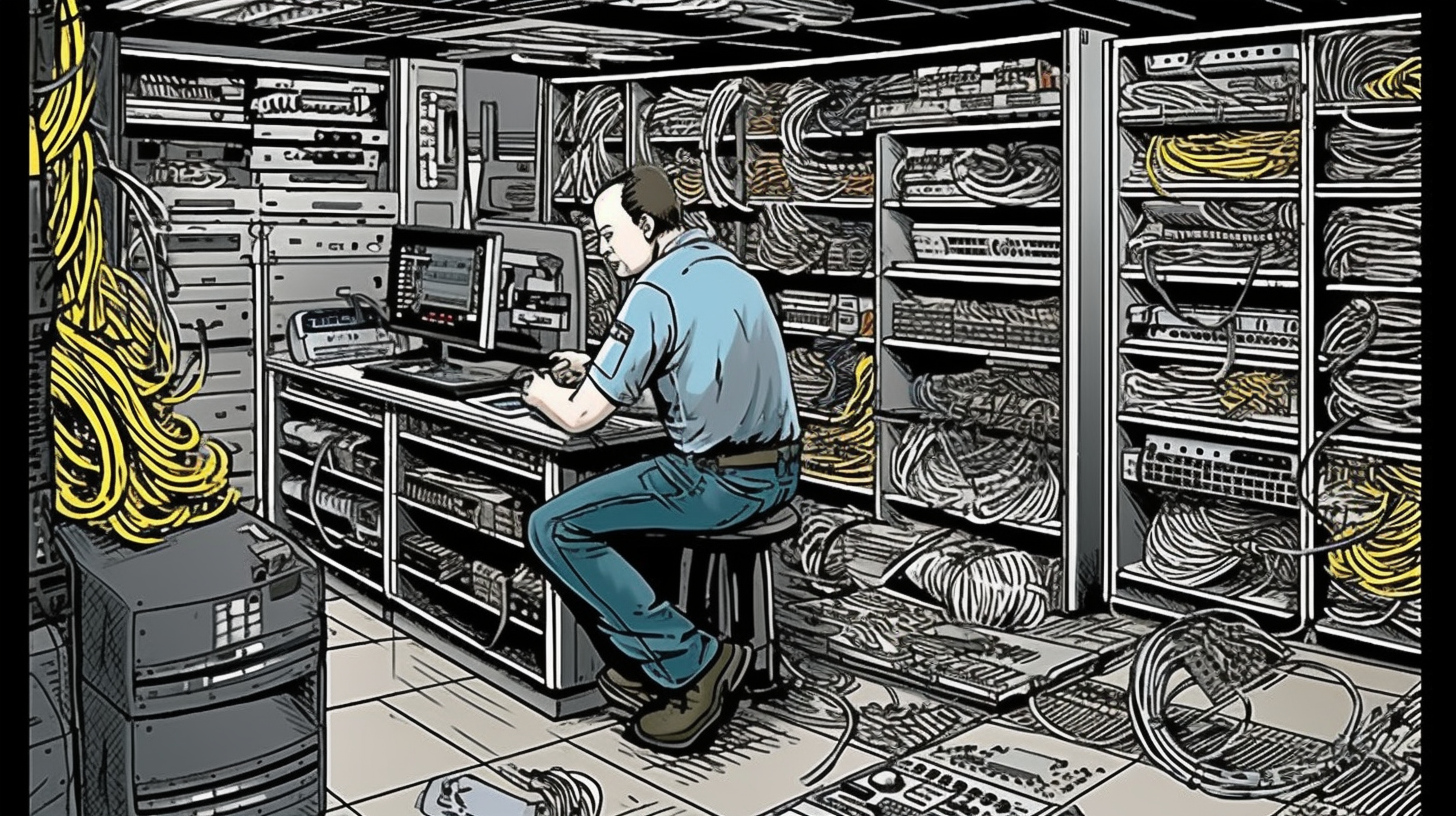Unraveling the Thread of Connectivity: A Comprehensive Guide to Troubleshooting Cable Connectivity Issues

From the perspective of most folks, internet and network connection processes may seem like a bundle of black magic. Yet, as we roll up our sleeves and dive into the mysterious world of CompTIA Network+ (N10-008) exam's intriguing topic, "Given a scenario, troubleshoot common cable connectivity issues and select the appropriate tools," we're about to discover that there's plenty of method to the supposed madness.
Academic Summary: Understanding Cable Connectivity Issues
Right off the bat, it's essential to grasp that troubleshooting connectivity issues isn't just a shot in the dark – it's a highly systematic and logical process. It commences with problem identification, blasting its way through determining the root cause and concluding with the implementation of the most fitting solution. However, as the saying goes, the real challenge lies within the details. A myriad of factors can give birth to connectivity issues, with the key culprits often being physical layer problems, data link issues, inappropriate IP configurations, firewall settings, and even good old human error.
Physical layer problems, for instance, can occur as a result of a malfunctioning network interface card (NIC), cables that belong to the yesterday of technology, crimped or damaged cables, or improper terminations. Data link issues can arise from the incorrect network configuration, corridor control problems, or MAC address concerns. IP configuration issues might be due to a wrongly assigned IP address, subnet mask problems, or incorrect gateway settings. Firewalls, while acting as our safeguard from the big bad world of the internet, can also be the instigator of connectivity issues if their settings are not configured aptly.
Among the most common tools used to troubleshoot cable connectivity issues are cable testers, multimeters, wire-map testers, and toner probes. Cable testers assist in identifying if a cable or a wire within the cable is broken. Conversely, multimeters, with their ability to measure resistance, can pinpoint where the breakage is in the cable. Wire-map testers come in handy in ensuring that the cable's wires are correctly arranged at both ends, while toner probes can trace wires within a bundle or through walls. The selection of these tools typically depends on the nature of the problem, making problem identification a vital first-step in the troubleshooting process.
Connection Issue Statistics: You're Not Alone!
Now, shake off those scholarly vibes for a moment. Let's chew the fat about what the numbers have to say! Many might find it surprising, but according to a study by the Information Technology Intelligence Consulting (ITIC), a whopping 98% of organizations affirm that a single hour of downtime costs them over $100,000 – talk about a high stakes game!
Meanwhile, a data analysis report by Ookla's Speedtest reveals that WiFi often tends to be the Achilles heel. They found a startling 30% decrease in download speed over WiFi compared to a wired ethernet connection. And for those of you with a soft spot for trivia, did you know that the humble ethernet cable turned 40 this year? In celebration, the Institute of Electrical and Electronics Engineers (IEEE) put on display a report, highlighting the impressive leap in connectivity speeds - zooming from a modest 3 Mbps to an eye-popping 400 Gbps!
You might be wondering, 'Does this tale weave on?' But don't touch that dial, there's still a smorgasbord of information waiting to leap out from this saga! The Federal Communications Commission (FCC) let loose a report, crafting a vivid picture of the US connectivity scene. It unveils a startling reality that around 19 million Americans - or roughly 6% of the population - are bereft of access to fixed broadband service. So, as our reliance on speedy and reliable connections grows, mastering the art of troubleshooting cable connectivity issues becomes an absolute necessity, not just a handy skill in our rapidly digitizing world.
In conclusion, troubleshooting common cable connectivity issues is a crucial aspect of network management. Not only does this ability save potentially significant financial losses, but it also ensures a smoother and more reliable network performance. With a grasp of the underlying causes of issues, the appropriate troubleshooting steps, and the necessary tools at hand, anyone can navigate this labyrinth to restore their network's health and vitality (to the joy of everyone who's ever shouted in frustration, "Why is the internet down AGAIN?!"). So go on, dig into the world of cable connectivity issues – who knows, you just may become the hero of your local LAN party!